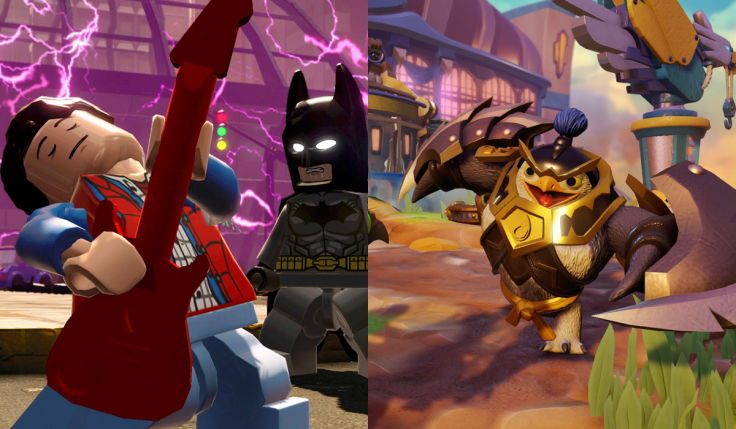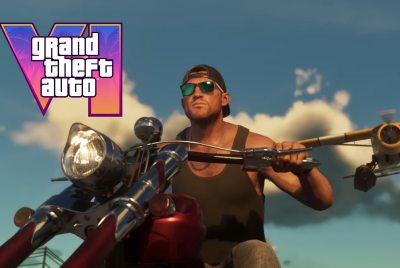How 2016 kids games like Lego Dimensions and Skylanders doubled down to avoid genre extinction
A look back at how games for children turned a genre's fortunes around this year.

As a genre, games for children have been a hit-and-miss affair. Publishers knew there were riches to be made, but refused to spend the money needed to create something that captivated little imaginations.
Ben 10 – a series about a boy who could turn into different aliens – should have been an easy sell at the height of its popularity in 2005. Just make a game in which the player turns into different aliens and let them run around causing mischief. Instead, children were treated to around eight different games that felt rushed – cash-ins designed to sell a brand rather than a game.
This cash-in mentality has been around for years. Power Rangers, Moshi Monsters, SpongeBob SquarePants, Phineas and Ferb – brands with killer subject matter that appealed to kids around the world, reduced to appearing on slap-dash boxart shovelling drivel.
But in 2005, TT Games had an idea. What if you made a game for children that wasn't insulting? Something that was accessible while rewarding, something that would prove so popular it's still going some 20+ games later? Enter the release that rebooted a stagnating genre – Lego Star Wars: The Video Game.
TT Games gave children options. Rushed, brand-focused games were now coming second place in the market to exploding Lego blocks and a one-of-a-kind sense of humour. By 2011, the games for children genre had become a runaway locomotive showing no signs of slowing. Meanwhile, a relatively unknown developer, called Toys for Bob, had a trick up its sleeve. What if you could combine playable action figures with video games?
Such a unique idea required two things: a risk-taker and a metric ton of money. Thankfully, Activision had the money and needed something innovative to capture a market they wanted in on with their own IP. As Toys for Bob co-founder Fred Ford put it: "Really, all the stars lined up for us."
And so Skylanders: Spyro's Adventure was born; a game that lets the consumer place small toys onto a portal feeding into a home console. Once placed, the toy then comes alive in-game as a playable character. Although the game had its issues, the ability to bring toys to life captured the imaginations of the young – and young at heart – everywhere.
Imitation is the sincerest form of flattery, and accordingly in 2013 Disney released its own take on this emerging sub-genre: Disney Infinity. The principle idea was the same, albeit with Disney's back catalogue of iconic IPs. It became a resounding success. People loved the chunkier figures based on movies they grew up watching. So much so, demand for the figurines couldn't be sated, and stock was constantly selling out everywhere.
Compounding Disney Infinity's problems was the fact pointless characters, like Guardians of the Galaxy's Yondu, could only used with specific playsets. Yondu, bizarrely, couldn't fight alongside fellow Marvel Comics character Spider-Man in his playset. Toys nobody wanted, combined with awful compatibility, would ultimately lead to Disney losing faith in the series.
2015 was a dangerous year for the toys-to-life genre, one that threatened to result in unceremonious mass extinction. Disney Infinity 3.0 had the Star Wars license to work with, but refused to make improvements to the core game. At the same time customers weren't sure whether the latest Skylanders was a regular game or a racing game. However, TT Games had returned with its own, Lego-branded toys-to-life game. Three toys-to-life titles were now poised to splinter the consumer base further than before.
Released around the same time of year, it wasn't long after that Disney announced plans to shut down Disney Infinity.
Again, despite strong sales totalling to around $200m, Disney didn't have a clue when it came to mass-producing the figures that went with the game. There were whispers of the next instalment letting players use their toys together in any Disney world, but that motion came too late in the day, and so Disney Infinity was no more.
Meanwhile, Skylanders Superchargers was a disappointment critically and commercially, with Activision saying the game performed "weaker than expected... due to greater competition in the toys-to-life genre".
Lego Dimensions, on the other hand, proved a great success, becoming the third-fastest selling toys-to-life game behind Skylanders Giants and Skylanders Swap Force. Success reigned, but would it last? Lego Dimensions wasn't going to be a yearly franchise like Skylanders and Disney Infinity. Instead, Warner Bros. Interactive and TT Games opted to do something different: keep the base game as the buy-in, then release new levels and figures via expansion packs. Something they've been doing throughout 2016.
Toys for Bob refused to accept their fate. Skylanders has always been seen as Diablo for kids – although writing it off as just a kids game misses how great the series is. The one thing it's been missing, however, is reward.
This is how 2016's Skylanders: Imaginators took the series in a bright and bold new direction. What if you let the player make their own Skylander? What if you released all the series' villains as collectable figures? What if defeating each boss, or opening a chest, resulted in the player being showered in creation loot? What if you included a Crash Bandicoot figure and an in-game Crash level to play through? Toys for Bob took the game's fate into its own hands and came out swinging, resulting in a raucous , nostalgia-fuelled showing that impressed.
On the Lego front, Dimensions has been on fire throughout 2016. Not only has the series seen two meaty expansions tying to the cinematic releases of Ghostbusters and Fantastic Beasts And Where to Find Them, the genius collective at TT Games also released the greatest Sonic game since Generations and a whimsical escapade based on Adventure Time. All without the need to buying an additional base game, only the packs.
2016 was the year games for children doubled down and fought back against oversaturation to show everyone why each of these games needs to exist. It may be an expensive endeavour, but with each franchise offering completely different experiences, and with Disney Infinity's boring gameplay no longer competing, this genre of games for children is alive and kicking once more, despite its close call with oblivion.
For all the latest video game news follow us on Twitter @IBTGamesUK
© Copyright IBTimes 2025. All rights reserved.



















